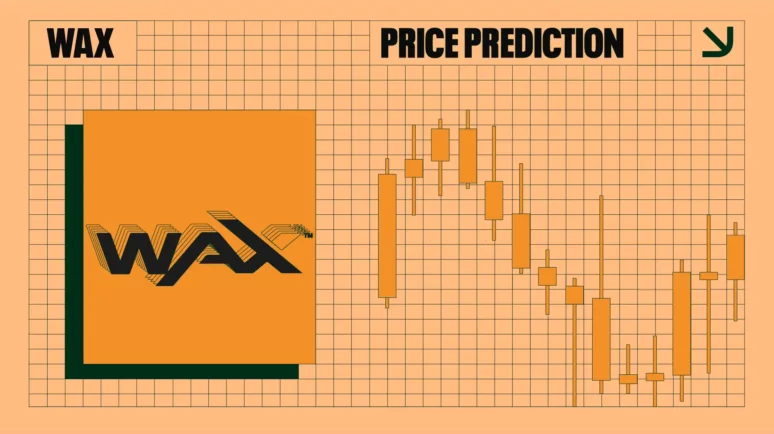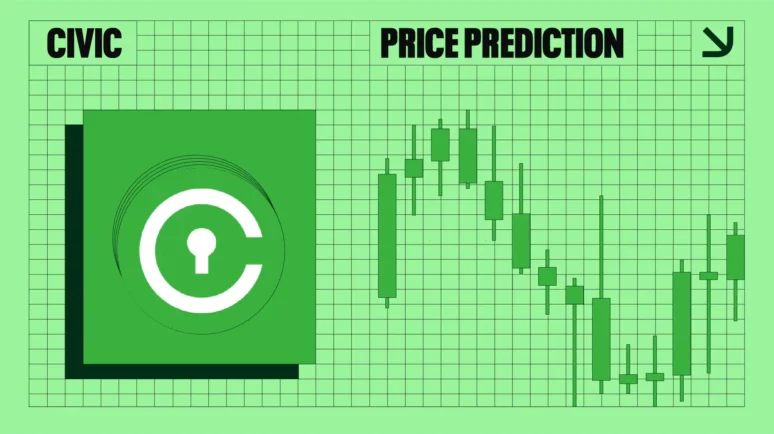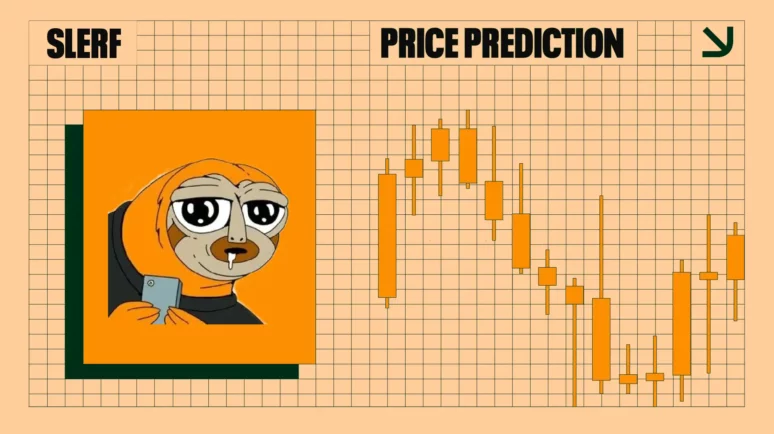Sui Price Prediction 2024: Can TVL Rise Translate to Price Boost?

What's next for SUI?
Key Takeaways
- The Sui blockchain and its native SUI coin are relative newcomers to the crypto market, having come out in 2023.
- Despite its recent arrival on the scene, SUI is already one of the top 100 cryptos by market cap.
- The platform hit an all-time high after announcing a partnership with Revolut.
- One SUI price prediction suggests it can reach $6.99 in 2025.
SUI, the native token of the Sui blockchain, rallied in late 2023 and early 2024, breaking past the dollar on its way to an all-time high of $2.18 on March 27.
The news came as Sui announced a partnership with fintech company and neobank Revolut.
On March 28, 2024, SUI was worth about $2.
But where to next? What is SUI? How does SUI work? Let’s see what we can find out and also take a look at some of the SUI Price Predictions that were being made as of March 28, 2024.
SUI Coin Price Prediction
Let’s take a look at some of the SUI price predictions that were being made as of March 28, 2024. It is important to remember that price forecasts, especially for something as potentially volatile as crypto, very often end up being wrong.
Also, keep in mind that many longer-term crypto price predictions are made using an algorithm, which means that they can change at a moment’s notice.
| 2024 | 2025 | 2030 | |
|---|---|---|---|
| Prediction #1 | $4.19 | $4.92 | $14.73 |
| Prediction #2 | $4.99 | $6.99 | $16.97 |
| Prediction #3 | $2.32 | $3.48 | $24.82 |
First, CoinCodex had a short-term SUI price prediction which said the coin would climb to $2.58 by April 2 before rocketing to $6.46 by April 27. The site’s technical analysis was bullish, with 21 indicators sending positive signals and just four making bearish ones.
SUI Price Prediction for 2024
DigitalCoinPrice thought SUI would reach $4.19 this year, judging by its average prediction. Bitnation said the crypto would hit $4.99. PricePrediction.net thought it would trade at $2.32 in 2024.
SUI Price Prediction for 2025
Bitnation’s average price prediction had SUI at $6.99 in 2025. PricePrediction.net had the coin reach $3.48 by the end of the year. DigitalCoinPrice, on the other hand, said SUI would trade at $4.92 next year.
SUI Price Prediction for 2030
Moving on to a more long-term SUI price prediction, PricePrediction.net saw the most growth over the coming years, saying the coin would stand at $24.82 by 2030. DigitalCoinPrice, meanwhile, thought it would be worth $14.73. Bitnation’s SUI price forecast said it would reach $16.97 at the start of the next decade.
Google BardAI Price Prediction for SUI (as of March 28)
Google’s BardAI platform gave the following price prediction for Sui on March 28. Please remember that the exact price prediction of an asset or cryptocurrency in the future is nearly impossible to achieve. Additionally, artificial intelligence price predictions are predicated on past performances and are in no way entirely accurate.
Short-term (Next 30 days):
- Possible increase of around 5% to reach $2.16. This prediction is based on some forecasting services using technical analysis, which looks at historical price movements. However, this could be impacted by unexpected market events.
Medium-term (End of 2024):
- Predictions range from a slight correction to a significant rise. Some analysts believe SUI could see a correction of 15% due to profit-taking and technical indicator. Others suggest it could reach $2.63 by year-end, reflecting potential growth in the Sui ecosystem and broader market sentiment.
Long-term (2030):
- Gradual increase with a possibility of reaching $2.88 or even higher. This is based on the assumption that Sui gains wider adoption and its underlying technology proves valuable. However, long-term predictions are highly uncertain and depend on various unpredictable factors.
Reasons to consider:
- These predictions are just forecasts and shouldn’t be taken as financial advice.
- The cryptocurrency market is volatile, and SUI’s price could fluctuate significantly.
- Factors like exchange listings, DeFi integration, and overall market trends will influence SUI’s price.
It added: “Remember, do your own research before making any investment decisions.”
Recent Updates from SUI
On March 27, Sui announced that it was teaming up with British neobank Revolut in an attempt to educate the fintech firm’s customers about crypto.
Sui Foundation MD Greg Siourounis said: “By joining forces with Revolut, we have a chance to introduce millions of users to Sui, the fastest growing ecosystem in crypto, and one which is providing the technological underpinnings that will enable businesses to build working solutions and empowering individuals to access those products and services seamlessly.”
SUI Price History

Let’s now take a look at the SUI price history . Although it is important to remember that past performance should never be taken as an indicator of future results, knowing what the coin has done since it first came onto the market can help give us some useful context when it comes to either making or interpreting an SUI price prediction.
When SUI first hit the open market on 3 May 2023, it was worth $1.71. Perhaps worryingly for potential investors, this price still serves as an all-time high for the coin. After that, it slipped down gradually, dropping below the dollar on 24 May. SUI has not been worth more than $1 since 31 May.
Part of the reason for that is down to the crypto market shrinking following the news that the SEC was suing the two largest crypto exchanges. While SUI was not listed as one of the authority’s targets, it still took a hit and it reached of $0.558 on 10 June.
After that, it tried to fight back. It reached $0.8816 on 22 June but dropped again. On August 17, it reached a low of $0.462. After that, it made something of a recovery but fell again in October. On October 19, it reached an all-time low of $0.3643. Since then, it has climbed back up, and, on November 8, 2023, SUI was worth about $0.54.
The crypto rallied over the following weeks, peaking at $0.9156 on December 27 and closing the year at $0.7784. On January 11 it broke past $1 and by February 2 it was worth about $1.50. SUI rallied the following month, reaching an all-time high of $2.18 on March 27 and trading at $2 on March 28.
With about 1.23 billion SUI in circulation out of a total supply of 10 billion, it had a market cap of around $2.4 billion, making it the 54th-largest crypto by that metric.
Sui Price Analysis

After launching, SUI surged but then fell, marking a period of price correction and stabilization. It bottomed out in October before embarking on a new upward trend, which resulted in a 500% increase, to its March 27 all-time high. Despite a subsequent decline indicating potential weakness, the price maintains its upward trajectory.
Since March 6, the chart has shown a rising wedge, which could indicate the uptrend’s completion. With the price now at its apex, a breakout should either confirm or deny this assumption.
Should we see a breakout to the upside, SUI could continue its journey for another higher high of $2.80. But if it falls, we will be given a signal that a larger correction is starting. In that case, SUI could fall by 40%, dropping to a low of $1.
Is SUI a Good Investment?
It is hard to tell right now. SUI is a pretty new coin. It has cemented itself in the top 100 cryptos, but we don’t know if, and how, it will maintain the interest it has generated so far. Keep in mind that there are plenty of so-called Ethereum Killers, which offer quicker speeds and cheaper transactions than Vitalik Buterin’s brainchild, but none of them have yet toppled ETH as the number one altcoin.
Nevertheless, there is some potential for SUI to do well. It will need to stay out of the crosshairs of regulators and hope the market can support its aims of growth. Its recent performance and metrics have been encouraging.
No matter what, if you want to invest in SUI, you will need to do your research.
Will SUI go up or down?
No one can say for sure right now. Although many of the SUI price predictions are optimistic, remember that price forecasts are very often wrong. Also, it is important to remember that prices can, and do, go down as well as up.
Should I invest in SUI?
Before you decide whether or not to invest in SUI, you will need to do your research, not only on SUI but also on other, similar coins and tokens, such as Solana (SOL) and Cardano (ADA). More importantly, though, you will need to remember to never invest more money than you can afford to lose.
Who are the Founders of SUI?
Mysten Labs founded the Sui platform in 2023. Mysten Labs itself was founded by former Meta developers Evan Cheng, Adeniyi Abiodun, Kostas Chalkias, George Danezis, and Sam Blackshear.
Who owns the most SUI?
On February 2 2024, one wallet held more than 5% of the SUI supply
Richest SUI Wallet Addresses
On February 2 2024, the five wallets with the most SUI were
- 0xb78607e24778265e02e584a5a46f7e020fe503c8511ace3aa7485142d65c8e2a. This wallet held 535,714,994 SUI or 5.36% of the supply.
- 0x6c6dbe9b3a93a3de77f44b5d9098cf082e951a0d07980be5b891e8f3a4c3bff4. This wallet held 181,817,828 SUI or 1.82% of the supply.
- 0xab73ad38c63f83eda02182422b545395be1d3caeb54b5869159a9f70b678cd56. This wallet, listed as OKX 1, held 163,866,779 SUI, or 1.64% of the supply.
- 0x15610fa7ee546b96cb580be4060fae1c4bb15eca87f9a0aa931512bad445fc76. This wallet held 128,059,472 SUI or 1.28% of the supply.
- 0xf3bfda04092a842d4c57c61f9d8fb99058792ab2622b2a0c0d83a6ea41de325f. This wallet held 113,000,004 SUI or 1.13% of the supply.
Fact Box
| Supply and distribution | Figures |
|---|---|
| Maximum supply | 10,000,000,000 |
| Circulating supply (as of March 28 2024) | 1,230,916,718 (12.31% of maximum supply) |
| Holder distribution | Top 10 holders own 13.55% of maximum supply (as of March 28 2024) |
From the Whitepaper
In its technical documentation or whitepaper , SUI says that it is named after the Japanese water element.
It says: “The power of the sui element lies in its fluidity—its ability to easily adapt to and transform any environment. Similarly, the Sui platform seeks to provide a flexible network that you can leverage to shape the web3 landscape.
“The Sui platform is built on Sui Move, which is derived from the core Move programming language.”
Sui Explained
There is an argument to be made that Ethereum (ETH) rather than Bitcoin (BTC) is the world’s most important crypto.
While BTC is the most dominant coin on the market, Ethereum’s system has helped pioneer further applications, with its use of smart contracts, computer programs that automatically execute once certain conditions are met, helping to support decentralized applications (DApps) and the wider world of decentralized finance (DeFi).
One issue people have struggled with when it comes to using Ethereum is its notorious lack of speed. While this was, in part, addressed by the blockchain’s move from a Proof-of-Work (PoW) consensus mechanism to a Proof-of-Stake (PoS) one in September 2022, there is still the desire, in some quarters, to see a quicker, more efficient and cheaper blockchain.
Sui is one such attempt to improve on Ethereum. The platform, which was officially launched in 2023 by former Meta developers ’s Mysten Labs, is supported by its eponymous token.
How Sui Works
Sui uses a variety of features to serve as a fast blockchain that can handle extra traffic. For instance, it uses what it calls horizontal scaling to allow transactions to take place at the same time. It also features the ability to store assets directly on the blockchain, which means that transactions are, at least in theory, cheaper.
The SUI coin supports the Sui blockchain. It pays for storage space on the platform and also covers transactions on the network. Holders can set it aside, or stake it, in return for rewards. People can buy, sell, and trade SUI on exchanges.
Sui Attention Tracker

Here is a chart for Sui’s Google search volume for the past 90 days. This represents how many times the term “Sui” has been Googled over the previous 90 days.
FAQs
Will SUI reach $10?
It might do but, if it does, it won’t happen for a while.
PricePrediction.net says it will get to that mark in 2028, while DigitalCoinPrice argues for it happening in 2029. Bitnation thinks it will reach double figures in 2027.
What is SUI used for?
SUI pays for transactions on the SUI blockchain. Holders can stake it in return for rewards. People can buy, sell, and trade it on exchanges.
Disclaimer
Please note that the contents of this article are not financial or investing advice. The information provided in this article is the author’s opinion only and should not be considered as offering trading or investing recommendations. We do not make any warranties about the completeness, reliability, and accuracy of this information. The cryptocurrency market suffers from high volatility and occasional arbitrary movements. Any investor, trader, or regular crypto user should research multiple viewpoints and be familiar with all local regulations before committing to an investment.


